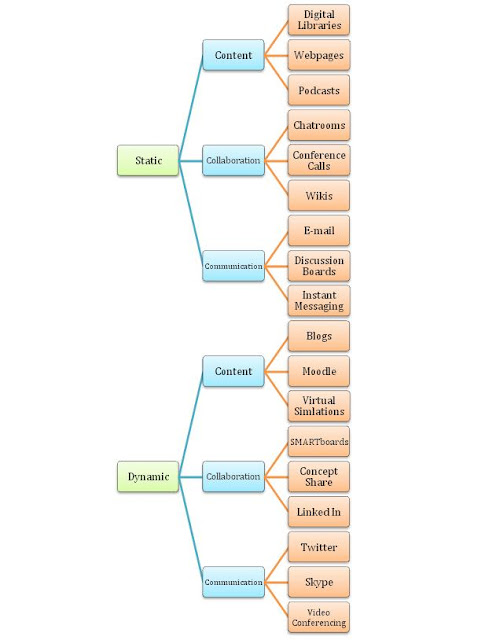I created the following video as an introduction to a presentation on virtual worlds at an educational technology conference. My references can be found in Google Docs at https://docs.google.com/document/d/15tuLa74n7FKwmGSSl9wJmzVbudPVyeJrk-Kk2SdW4hA/edit?hl=en_US
Enjoy!!
The Journey of Integrating Technology
Monday, November 14, 2011
Sunday, November 6, 2011
From Static to Dynamic Technologies in Distance Education
Media and Technology in Distance Education
Reflecting on the static-dynamic continuum, I would say that I fall in the middle. As far as static technologies, I still use text, web pages, and podcasts for gathering information. Through my experiences thus far through Walden University, I have learned how to collaborate and build knowledge through communications with individuals and groups using discussion boards, blogs, and wikis. Throughout my current courses and other recent courses, I have learned how I can move towards integrating more dynamic technologies into my instruction, which “includes tools that involve learners on a much deeper cognitive level” (Moller, 2008, p.1). In the future, my goals are to integrate more virtual simulations and multi-user virtual environment experiences to enhance student motivation and support their learning. Using programs such as ConceptShare will encourage collaboration and enhance communications between students. In Fahy’s chapter, he explains that, “any medium that promotes collaboration, group formation, and support could qualify as social software” (Anderson, 2008). I can teach students to use social software tools such as Skype and Twitter for sharing their ideas and communicating with others to gain knowledge. I am also currently in the process of encouraging the adoption of Moodle as a learning management system in my school district, which will enhance access to content, collaboration among students, and communication between instructors and students.
The following blogs also provide examples of media and technology along the static-dynamic continuum:
http://pennyfree.blogspot.com/2010/05/static-dynamic-technologies-concept-map.html
http://belindavannorman.blogspot.com/2011/08/moving-toward-dynamic-technologies.html
References
Anderson, T. (Ed.). (2008). The theory and practice of online learning (2nd ed.). Edmonton, AB: Athabasca University Press.
Moller, L. (2008). Static and dynamic technological tools. [Unpublished Paper].
Subscribe to:
Comments (Atom)
